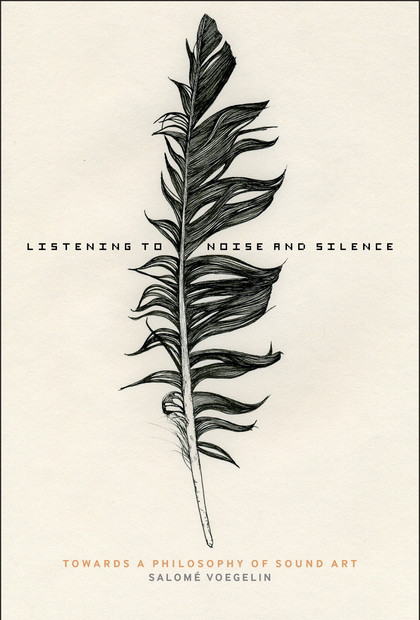Jonathan Sterne: MP3: The Meaning of a Format (2012)
Filed under book | Tags: · codec, compression, filesharing, history of technology, information theory, listening, mp3, noise, piracy, psychoacoustics, recording, silence, sound recording, technology

“MP3: The Meaning of a Format recounts the hundred-year history of the world’s most common format for recorded audio. Understanding the historical meaning of the MP3 format entails rethinking the place of digital technologies in the larger universe of twentieth-century communication history, from hearing research conducted by the telephone industry in the 1910s, through the mid-century development of perceptual coding (the technology underlying the MP3), to the format’s promiscuous social life since the mid 1990s.
MP3s are products of compression, a process that removes sounds unlikely to be heard from recordings. Although media history is often characterized as a progression toward greater definition, fidelity, and truthfulness, MP3: The Meaning of a Format illuminates the crucial role of compression in the development of modern media and sound culture. Taking the history of compression as his point of departure, Jonathan Sterne investigates the relationships among sound, silence, sense, and noise; the commodity status of recorded sound and the economic role of piracy; and the importance of standards in the governance of our emerging media culture. He demonstrates that formats, standards, and infrastructures—and the need for content to fit inside them—are every bit as central to communication as the boxes we call “media.””
Publisher Duke University Press, Durham, NC, September 2012
Sign, Storage, Transmission series
ISBN 0822352877, 9780822352877
341 pages
Reviews: Robert Barry (review31), Hillegonda Rietveld (Times Higher Education), Hua Hsu (Slate).
Interview with the author: Eric Harvey (Pitchfork).
PDF (updated on 2021-4-9)
Comment (0)Luciano Chessa: Luigi Russolo, Futurist: Noise, Visual Arts, and the Occult (2012)
Filed under book | Tags: · art, art history, biography, futurism, noise, occultism, synaesthesia

“Luigi Russolo (1885–1947)—painter, composer, builder of musical instruments, and first-hour member of the Italian Futurist movement—was a crucial figure in the evolution of twentieth-century aesthetics. As creator of the first systematic poetics of noise and inventor of what has been considered the first mechanical sound synthesizer, Russolo looms large in the development of twentieth-century music. In the first English language study of Russolo, Luciano Chessa emphasizes the futurist’s interest in the occult, showing it to be a leitmotif for his life and a foundation for his art of noises. Chessa shows that Russolo’s aesthetics of noise, and the machines he called the intonarumori, were intended to boost practitioners into higher states of spiritual consciousness. His analysis reveals a multifaceted man in whom the drive to keep up with the latest scientific trends coexisted with an embrace of the irrational, and a critique of materialism and positivism.”
Publisher University of California Press, 2012
An Ahmanson Foundation Book in the Humanities
ISBN 0520270630, 9780520270633
284 pages
PDF
EPUB
See also Luigi Russolo’s The Art of Noises (1987)
Salomé Voegelin: Listening to Noise and Silence: Towards a Philosophy of Sound Art (2010)
Filed under book | Tags: · aesthetics, noise, philosophy, silence, sound art, sound recording

“Listening to Noise and Silence engages with the emerging practice of sound art and the concurrent development of a discourse and theory of sound. In this original and challenging work, Salomé Voegelin immerses the reader in concepts of listening to sound artwork and the everyday acoustic environment, establishing an aesthetics and philosophy of sound and promoting the notion of a sonic sensibility.
A multitude of sound works are discussed, by lesser known contemporary artists and composers (for example Curgenven, Gasson and Federer), historical figures in the field (Artaud, Feldman and Cage), and that of contemporary canonic artists such as Janet Cardiff, Bill Fontana, Bernard Parmegiani, and Merzbow.
Informed by the ideas of Adorno, Merleau-Ponty and others, the book aims to come to a critique of sound art from its soundings rather than in relation to abstracted themes and pre-existing categories. Listening to Noise and Silence broadens the discussion surrounding sound art and opens up the field for others to follow.”
Publisher Continuum, London and New York, 2010
Music/Sound Studies series
ISBN 1441162070, 9781441162076
256 pages
Reviews: Daniela Cascella (Journal of Sonic Studies), Brian Kane (NonSite).
PDF (updated on 2018-4-30)
Comment (1)
